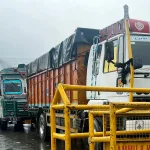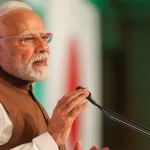High in the Himalayas where the heights are dizzying, the air rarefied, and the sky a dazzling azure blue lie some of the world’s most fascinating places that have no equals till date. It is no brainer to measure nature’s bounties in their finery and blossoming too as a beacon to home on the humanity towards it in order to partake in its beauty.For centuries together, this northern frontier has been a cradle nurturing the sub-continent’s ethos and acting as a guiding light of hope for the world at large. For here lie some of the world’s most revered places of worship, devotion and dedication to the human cause. Leaving aside ‘Jerusalem’ that cradles the vestiges of Islam, Judaism and Christianity ,it is Himalayas that carry the ethos of Hinduism, Buddhism and Jainism in places like ‘Kailash Mansarovar at one place in addition to countless such places of reverence. India has been fortunate enough to be bestowed by the Almighty to have a geographical entity in the form of Himalayas that stood test of times in safeguarding its honour, and well-being in times of crisis.
Though there are countless border villages that dot the entire Himalayan land scape from the frigid locales of Ladakh to the dense green environments of Arunachal Pradesh, but certain border villages count more than their counterparts owing to myriad qualities that are inbuilt in their very beings. ‘Mana’ village is one such hilly and rural entity perched on the rarefied locales of frontier district of Chamoli Garhwal backed by thousands years of Hindu mythological importance as also its proximity to one of the most famous Hindu shrines revered all over the world for centuries –the Badrinath Dham. The village of ‘Mana’ located at about 3,200 meters (10,500 feet) above the MSL is on the northern terminus of NH-7 and the first village before the ‘Mana pass”about 26 kms from the Indo-Tibet border.
Till very late this border village used to be called by the moniker ‘The last Indian village’ with huge placards and banners welcoming the incoming tourists with the above mentioned adage. But no longer now. For the last one year spanning w.e.f February 2023 the union government in a bid to boost up development of border villages,improving the quality of lives of the people inhabiting these villages as also to ‘Reverse migrate’ the burgeoning population in the metro/cities of the country from such border areas has embarked upon an ambitious programme of investing the national wealth in the form of money, time and effort in these villages. This entire gamut of change of mentality of the union government in putting the border areas under a fast track development mode has made change of moniker from ‘The last Indian village to ‘First Indian village’ that signifies the importance the present government lays on its border areas. No longer are such villages of the ilk of Mana now on the backburner of India’s development module.
The VVP or the ‘Vibrant village programme’ is a centrally sponsored scheme in the union budgets spanning 2022-23 to 2025-26 for development of villages on the northern border,thus improving the quality of life of people living in these identified border villages. The scheme of VVP shall cover the border areas of Himachal Pradesh, Uttrakhand, Arunachal Pradesh, Sikkim and Ladakh. It will cover the border villages numbering 2,963 with 663 of them to be covered in the first phase. Vibrant village action plans will be created by the district administration with the help of gram panchayats. This programme shall be exclusive of the BADP (Border area development plan).The objectives of VVP are multifarious in nature that seek to identify and develop the economic drivers based on local, natural, human and other resources of the border villages on the northern border. The development module is based on the ‘Hub and spoke’ model through promotion of social entrepreneurship, empowerment of youth and women through skill development and entrepreneurship. Leveraging the tourism potential through promotion of local, cultural, traditional knowledge and heritage. The last facet of this VVP programme is to develop sustainable eco-agricultural businesses on the concept of OVOP(One village one product) through community based organizations ,cooperatives and NGOs.
The idea of VVP gained traction firstly owing to the lack of development in the border areas and secondly to bolster the social and security framework along the china border. It is not that the idea of border development dawned now only on the Modi dispensation, but readers will do well to remember that way back in the early 1950s the Nehru government had formed Major General Himmat Singhji committee to give a way forward for border area development particularly in the North East corner of India. The emphasis was on improving the lines of communication, bridges, roads etc with the hinterland in order to help facilitate faster movement of men, material from the borders as well as in the reverse order.
Over a period of time impacted by the time and tide of events, the committee lost its remit that had its ominous ramifications manifest in the 1962 Sino-Indian border warwith disastrous consequences for the country. The clashes in Galwan valley in 2020 once again brought to fore the chinks in our armour in border area development and its concomitant effects on our national security apparatus. Combined with this fact was the spate of feverish activities which our northern neighbour undertook in border area villages in the TAR-Tibetan autonomous region by way of developing Tibetan settlements /villages as part of their overall plan known as ‘New defence village scheme’ way back in 2017. The Chinese have undertaken a massive progamme of modernization of about 624 border villages in the key areas of ‘Nyingtri’ that borders our Arunachal Pradesh. These border villages will jumpstart any Chinese attempt or preparation during clashes with us.
In order to match if not surpass our northern neighbour’s attempt to militarize its border areas as part of dovetailing the national security with that of local security system, India too has allocated Rs 4,800 / crores under the VVP programme to bolster the overall security gamut with fast track approval of raising 7 ITBP battalions that will provide the ITBP personnel a window to rest, recuperate and train to their optimum level. Mana village fits into this overall gambit of plans that fulfills not only the cardinal requirements of VVP progamme but rather exceeds its very remit by way of acting as a magnet to attract worldwide tourists and pilgrims to its domain.
Its close proximity (3 kms) from Badrinath dham, and also being enroute to the famous ‘Satopanth’ peak and glacier is unmatched by any other border village as having such excellent USPs. I have had the unique opportunity of visiting Mana village way back in May 2019, when even PM Modi had landed there as part of his plan to visit ‘Char dham‘ yatra preparations as also to pay obeisance a the holy shrine of Badrianth and Kedarnath . The fact that ‘Mana’ village now identifies itself as the country’s so called ‘First village’rather than as the ‘Last Indian village’ with the green hoardings by the NHAI on the NH-7 displaying the same speaks volumes about the changed priorities which the country has had in the recent past. It is also but natural that the country’s national boundaries start from the north taking all its settlements, inhabitants as the ‘First responders’ to any threats emanating from that direction. If that be the case why not label them with the word ‘First’ instead of ‘Last’. That exactly has happened now to a place like ‘Mana’. No wonder border roads has aptly written at Mana—‘Our land doesn’t end here; it begins.
(The writer is a retired army officer and can be approached on his email: slalotra47292gmail.com)





